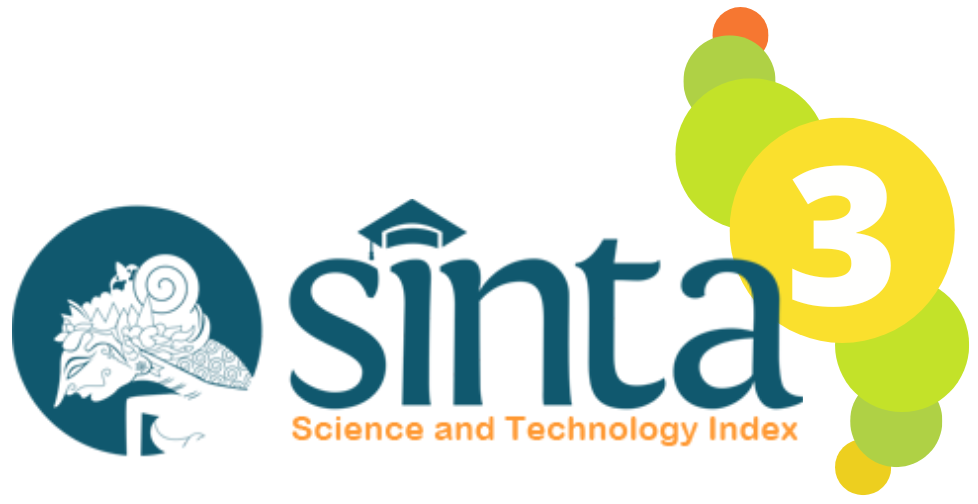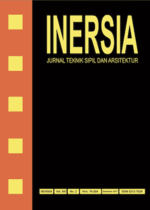Study of Sediment Deposit Characteristics based on Geotechnical Properties and Geographic Information System (GIS) Approaches
DOI:
https://doi.org/10.21831/inersia.v19i2.66778Keywords:
sedimentation, geotechnical, geographic information systemAbstract
Several sedimentation processes occur in the downstream area between river mouths and the sea. One of the effects of this sedimentation process is the occurrence of siltation around the coast. Not infrequently, this disrupts sea passages when the ship is about to head to the pier or go to sea. Kuala Beach is one of the locations in Pangkalpinang where the sedimentation process continues to occur enough to disrupt the smooth flow of sea traffic. This study aims to provide an overview and analysis of results related to sediment characteristics, spatial analysis of deposits, and predictions of deposition rates around Kuala Beach, Pangkalpinang City. This research was conducted using the following methods: 1) Method of investigating sediment characteristics by collecting data through field testing in the form of hand drills and laboratory testing, 2) Spatial analysis method by mapping the area of sedimentation based on the results of sediment characteristic tests using Agisoft Metashape and QGIS. The results of this study note that sediment deposits are dominated by sediments with sandy grain characteristics (SP symbol based on the Unified Soil Classification System) and a fine grain content (passing sieve number 200) of around 1-3%. The pattern of distribution of sediment deposits is known to have relatively flat contours and relatively uniform characteristics down to a depth of 1.5 m. The coefficient of grain uniformity (Cu) is in the range of 2.43-8.2 with the tendency of uniformity level getting higher to the southeast. The coefficient of grain gradation (Cc) is in the range of 0.44-1.64 with the tendency of the gradation level getting better to the southeast.References
H. El-sersawy, "Sediment deposition mapping in Aswan High Dam Reservoir using Geographic Information System (GIS)," Ninth Int. Water Technol. Conf., no. September 2005, pp. 239–247, 2005.
S. Rios, A. V. da Fonseca, N. Cristelo, and C. Pinheiro, "Geotechnical Properties of Sediments by In Situ Tests," Sustain. Civ. Infrastructures, no. July, pp. 59–68, 2018, doi: 10.1007/978-3-319-61902-6_6.
K. Tempa et al., "Geotechnical parameter assessment of sediment deposit: A case study in Pasakha, Bhutan," Cogent Eng., vol. 8, no. 1, pp. 0–21, 2021, doi: 10.1080/23311916.2020.1869366.
M. B. Hartawan, E. Suhartanto, and S. Eahyuni, "Analisa Erosi dan Sedimentasi Berbasis Sistem Informasi Geografis (SIG) pada Bagian Hulu DAS Ciliwung Kabupaten Bogor Jawa Barat," JTRESDA J., vol. 1, no. 2, pp. 612–621, 2021.
S. N. Faridah, "SEDIMENTATION RATE ESTIMATION FROM COMMUNITY LAND USE IN MAMASA WATERSHED ( Pendugaan Laju Sedimentasi dari Setiap Penggunaan Lahan oleh Masyarakat di Daerah Aliran Sungai Mamasa )," J. Mns. dan Lingkung., vol. 19, no. 1, pp. 12–20, 2012.
M. Shafaie, H. Ghodosi, and K. H. Mostofi, "River sediment monitoring using remote sensing and GIS (case study KARAJ watershed)," Int. Arch. Photogramm. Remote Sens. Spat. Inf. Sci. - ISPRS Arch., vol. 40, no. 1W5, pp. 675–680, 2015, doi: 10.5194/isprsarchives-XL-1-W5-675-2015.
U. C. Kothyari and S. K. Jain, "Sediment Yield Estimation using GIS," Hydrol. Sci. J., vol. 42, no. 6, pp. 833–843, 1997, doi: 10.1080/02626669709492082.
M. Das Adhikari, S. Maiti, S. Patra, A. Jana, S. K. Maiti, and A. Sengupta, "GIS based beach sand budget analysis through seasonal beach profiling using cartographic techniques," Model. Earth Syst. Environ., vol. 2, no. 2, pp. 1–13, 2016, doi: 10.1007/s40808-016-0115-9.
Badan Standardisasi Nasional, "Standar Nasional Indonesia: Cara uji analisis ukuran butir tanah." pp. iii–iv, 2008.
B. M. Das, Principles of Geotechnical Engineering: Seventh Edition. 2010.
R. M. Pokhrel, J. Kuwano, and S. Tachibana, "A kriging method of interpolation used to map liquefaction potential over alluvial ground," Eng. Geol., vol. 152, no. 1, pp. 26–37, 2023, doi: 10.1016/j.enggeo.2012.10.003.
G. H. Pramono, "Akurasi Metode IDW dan Kriging untuk Interpolasi Sebaran Sedimen Tersuspensi di Maros, Sulawesi Selatan," Forum Geogr., vol. 22, no. 2, p. 145, 2008, doi: 10.23917/forgeo.v22i2.4988.
V. Boumpoulis, M. Michalopoulou, and N. Depountis, "Comparison between different spatial interpolation methods for the development of sediment distribution maps in coastal areas," Earth Sci. Informatics, vol. 16, no. 3, pp. 2069–2087, 2023, doi: 10.1007/s12145-023-01017-4.
C. Sun, N. Wang, S. Jin, and M. Wang, "Study on Spatial Interpolation Method of Marine Sediment Particle Size Based on Geostatistics," J. Coast. Res., vol. 108, no. sp1, pp. 125–130, 2020, doi: 10.2112/JCR-SI108-025.1.
Downloads
Published
How to Cite
Issue
Section
License
Authors who publish with INERSIA journal agree to the following terms:
- Authors retain copyright and grant the INERSIA journal right of first publication with the work simultaneously licensed under Creative Commons Attribution License (CC BY 4.0) that allows others to share the work with an acknowledgment of the work's authorship and initial publication in this journal.
- Authors can enter into separate, additional contractual arrangements for the non-exclusive distribution of the published version of the work (e.g., post it to an institutional repository or edit it in a book), with an acknowledgment of its initial publication in this journal.
- Authors are permitted and encouraged to post their work online (e.g., in institutional repositories or on their website) before and during the submission process, as it can lead to productive exchanges, as well as earlier and greater citation of published work.

INERSIA by https://journal.uny.ac.id/index.php/inersia was distributed under a Creative Commons Attribution 4.0 International License











